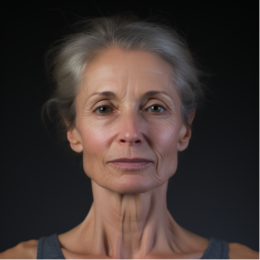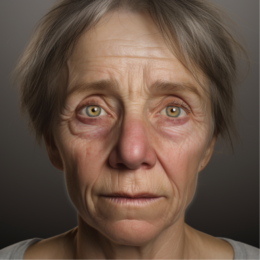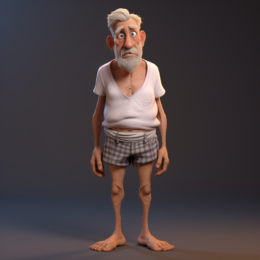The Root Causes of Anxiety: Everything You Should Know

Anxiety, as common as it is, remains widely misunderstood. While occasional bouts of stress are a universal human experience, chronic anxiety signifies a more serious underlying issue, often categorized as an anxiety disorder. This comprehensive guide will explore what causes anxiety, the symptoms and impacts of an anxiety disorder, and share effective strategies to deal with anxiety and how to help with anxiety attacks.
Understanding Anxiety and Anxiety Disorders
Anxiety, in its most basic form, is a response to stress or perceived danger. It becomes a concern when it transforms into an anxiety disorder, marked by overwhelming worry, fear, and apprehension that persist and worsen over time. The World Health Organization estimates that anxiety disorders affect around 264 million people globally, emphasizing the critical need for awareness and understanding of this condition.
Statistics & Interesting Facts:
According to the World Health Organization, anxiety disorders affect around 264 million people globally, approximately 3.4% of the global population. This number has likely grown due to the impacts of the COVID-19 pandemic, which has been linked to increased rates of anxiety and other mental health disorders.
What is an Anxiety Disorder?
An anxiety disorder is more than fleeting feelings of nervousness or worry. It refers to a collection of mental health conditions that provoke persistent and overwhelming anxiety and fear. These conditions are not merely discomforting but are debilitating, often disrupting an individual’s ability to work, study, interact socially, or even carry out everyday activities. Examples include generalized anxiety disorder, panic disorder, and various phobia-related disorders.
Statistics & Interesting Facts:
According to the Anxiety & Depression Association of America, nearly 18.1% of adults in the United States experience an anxiety disorder annually. Interestingly, women are 60% more likely than men to experience an anxiety disorder over their lifetime.
Signs of Anxiety
So, what are signs of anxiety? Anxiety disorders can manifest in many ways, and the signs can vary significantly from person to person. Typical signs of anxiety include chronic worry that is difficult to control, restlessness, difficulty concentrating, irritability, and disturbances in sleep patterns. Physical symptoms, like a rapid heart rate, fatigue, and muscle tension, are also common. It’s important to remember that occasional anxiety is a part of life. However, if these symptoms persist for extended periods, it could indicate an anxiety disorder.
Statistics & Interesting Facts:
According to the National Institute of Mental Health, in the U.S., about 31.1% of adults experience an anxiety disorder at some point. However, anxiety disorders are treatable, and most people can reduce their symptoms significantly with professional care.
Factors that Cause Anxiety
The root causes of anxiety disorders are multifaceted and complex, often involving a cocktail of several factors:
Genetics
Anxiety, much like many other mental health disorders, can be hereditary. Research has shown that if a close family member has an anxiety disorder, an individual is more likely to develop one themselves. This inheritance doesn’t guarantee an anxiety disorder’s onset but increases susceptibility.
Statistics & Interesting Facts:
Studies show that if a first-degree family member (like a parent or sibling) has an anxiety disorder, you are five times more likely to develop an anxiety disorder.
Brain Chemistry
Imbalances or irregularities in certain neurotransmitters (chemicals responsible for communication between nerve cells) in the brain can also contribute to anxiety disorders. For instance, alterations in serotonin and norepinephrine, neurotransmitters associated with mood regulation, are often observed in people with anxiety disorders.
Statistics & Interesting Facts:
Studies on twins have shown that if one twin has an anxiety disorder, the other is more likely to have an anxiety disorder, suggesting a genetic component. However, this likelihood is even higher if they grew up in a stressful environment, showing the crucial interplay between genetics and life experiences.
Life Experiences
Significant life events such as experiencing trauma, abuse in childhood, or the loss of a loved one can set off anxiety disorders. Moreover, certain people with a predisposition to anxiety may find that even minor stressors or life changes can trigger overwhelming worry and fear.
Statistics & Interesting Facts:
According to the National Child Traumatic Stress Network, up to 15% of children who experience a traumatic event develop an anxiety disorder.
Personality Traits
Specific personality traits, such as perfectionism, low self-esteem, or being easily flustered, can increase the likelihood of developing an anxiety disorder.
Statistics & Interesting Facts:
According to a study published in the Journal of Abnormal Psychology, children who are perfectionists, who want everything exactly right and are overly critical of themselves, are more likely to develop an anxiety disorder by their teens.

Dealing with Anxiety
If anxiety becomes a relentless part of your life, knowing how to deal with anxiety becomes crucial. Seeking professional help is paramount. Alongside this, various strategies can aid in managing anxiety:
Therapy and Medication
Cognitive-Behavioral Therapy (CBT) is a widely recognized method for treating anxiety disorders. This form of therapy helps patients identify distressing thoughts and behaviors and learn effective coping mechanisms. In addition, certain medications, such as selective serotonin reuptake inhibitors (SSRIs), can alleviate symptoms. It’s crucial, however, to use these medications under the supervision of a healthcare provider due to potential side effects.
Statistics & Interesting Facts:
According to a review of research published in Clinical Psychology Review, about 60% of people improve significantly with CBT, and about 45% recover completely.
Lifestyle Modifications
Integrating regular exercise, maintaining a balanced diet, practicing good sleep hygiene, and adopting mindfulness practices like yoga and meditation can help mitigate anxiety symptoms. These activities stimulate the release of endorphins, your body’s natural mood lifters, and promote a sense of well-being.
Statistics & Interesting Facts:
According to a study in the Journal of Clinical Psychiatry, a 10-minute daily meditation practice can reduce anxiety symptoms by 60%.
Social Support
Sharing feelings and experiences with trusted friends and family or joining a support group can make individuals feel less isolated and more understood. This support can provide a valuable platform to express feelings and learn from others’ experiences.
Statistics & Interesting Facts:
The National Institute of Mental Health suggests that social support from family and friends can significantly reduce the psychological impact of anxiety.
How to Help with Anxiety Attacks
Anxiety attacks, or panic attacks, are sudden bouts of intense fear or discomfort that trigger severe physical reactions. If you or someone else is experiencing an anxiety attack, these strategies can be helpful:
Breathe Deeply: Deep, controlled breathing can help reduce the intensity of panic symptoms. By focusing on slow, deep breaths, the body can shift from its “fight or flight” response to a state of relaxation.
Ground Yourself: Grounding techniques, such as focusing on physical sensations (like touching something or describing what you see around you), can help distract the mind from panic symptoms and reorient to the present moment.
Seek Professional Help: If panic attacks become a frequent part of life, it’s crucial to seek help from a mental health professional. They can provide treatments such as therapy or medication to manage and reduce the frequency of attacks.
Statistics & Interesting Facts:
According to the National Institute of Mental Health, about 2-3% of Americans experience panic disorder in a year. Interestingly, women are twice as likely as men to experience panic disorder.
Conclusion
Understanding what causes anxiety and the nature of anxiety disorders is the first and most critical step toward managing them effectively. Whether you are experiencing signs of anxiety or seeking ways to assist someone else, remember that help is always available. Seeking assistance and adopting effective coping strategies are crucial to living a balanced and fulfilling life, free from crippling anxiety.
References:
- World Health Organization. (2021). Mental disorders. Retrieved July 10, 2023, from https://www.who.int/news-room/fact-sheets/detail/mental-disorders
- Anxiety & Depression Association of America. (n.d.). Facts & Statistics. Retrieved July 10, 2023, from https://adaa.org/about-adaa/press-room/facts-statistics.
- National Institute of Mental Health. (2021). Anxiety Disorders. Retrieved July 10, 2023, from https://www.nimh.nih.gov/health/statistics/anxiety-disorders.
- Stein, M. B., Jang, K. L., Taylor, S., Vernon, P. A., & Livesley, W. J. (2002). Genetic and environmental influences on trauma exposure and posttraumatic stress disorder symptoms: a twin study. American Journal of Psychiatry, 159(10), 1675-1681.
- National Child Traumatic Stress Network. (n.d.). Effects of Complex Trauma. Retrieved July 10, 2023, from https://www.nctsn.org/what-is-child-trauma/trauma-types/complex-trauma/effects
- Flett, G. L., Hewitt, P. L., Blankstein, K. R., & O’Brien, S. (1991). Perfectionism and learned resourcefulness in depression and self-esteem. Personality and Individual Differences, 12(1), 61-68.
- Hofmann, S.G., Asnaani, A., Vonk, I.J.J., Sawyer, A.T., & Fang, A. (2012). The Efficacy of Cognitive Behavioral Therapy: A Review of Meta-analyses. Cognitive Therapy and Research, 36, 427–440. DOI: 10.1007/s10608-012-9476-1.
- Khoury, B., Sharma, M., Rush, S. E., & Fournier, C. (2015). Mindfulness-based stress reduction for healthy individuals: A meta-analysis. Journal of psychosomatic research, 78(6), 519-528.
- National Institute of Mental Health. (2019). Social Anxiety Disorder: More Than Just Shyness. Retrieved July 10, 2023, from https://www.nimh.nih.gov/health/publications/social-anxiety-disorder-more-than-just-shyness/index.shtml.
- National Institute of Mental Health. (2017). Panic Disorder: When Fear Overwhelms. Retrieved July 10, 2023, from https://www.nimh.nih.gov/health/publications/panic-disorder-when-fear-overwhelms/index.shtml.





